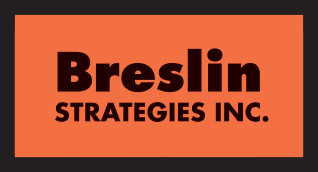A Million Miles Later,
Some Things Never Change
Last month I was flying along, minding my own business, when the flight attendant came up to me. In the crowded cabin she announced to me and the other passengers that on this flight I would pass one million miles flying on United. Everyone clapped. I sat there stunned. A thousand presentations and four hundred thousand people later — and now, a million miles. My thoughts were interrupted by the woman next to me. She asked, “So what do you get for a million miles?” And before I could think, it just popped out of my mouth.
“You get an ex-wife.”
Everyone howled with laughter.
So, after that many miles and years, I want to take an inventory on what has changed or improved in our industry and what has remained the same. With pretty much unlimited access to the owner community; construction CEOs and International Presidents; learning specialists, training directors, Business Managers, field leaders, rank-and-file union members and even apprentices, here are my findings for your consideration.
The Good
- Unions are much more businesslike and ROI-focused. The old school, status-quo dinosaurs have finally died off. The younger leaders are more professional and often getting it done.
- Our safety culture is outstanding and remarkable in its depth and execution.
- Accountability and performance matter. Finally.
- Negotiated work becoming dominant has changed a lot of the low-bid mentality and bad business practices.
- The amount of resources dedicated to training now being provided is unprecedented and noteworthy.
- The new generation of leadership has way more emotional and social intelligence and uses it well.
- Contractors are finally focusing on people as their most valuable assets and investing in them at a level not seen before. Recruitment and retention are part of any successful contractor’s strategy for the first time.
- The Millennial apprentices that I meet today are better educated, more open to change, highly optimistic and will change the game for our industry (despite their “issues”).
The Bad
- The stigma about working in our industry still exists. Parents, teachers and counselors still don’t get the amazing opportunity. But at least the value of a college education (and debt) is up for debate.
- The intake system for apprentices in union construction still sucks. It is often disjointed and lacks proper testing, interview and other protocols, leading to 10-30% drop outs and the entry of marginal candidates. We can do much better.
- The structure of most major unions has not changed much, nor have there been the mergers or consolidation that were expected to increase resources, leverage economies of scale and reduce union politics as an obstacle to change.
- The state of training and development by most contractors for their field leaders is pathetic. Field leaders who manage tens to hundreds of millions of dollars in a career still rarely get any form of leadership and management training – and that falls squarely on contractors for their apathy.
- Many owners still treat contractors like shit. Transfer of risk has become a high art: brutal specifications, insane schedules, poor designs, lack of communication, untimely responses, overreach by retained CMs, and a lot more – despite a full two decades of “partnering,” it still looks to me like the owner community has a long way to go.
The Ugly
- The other day, at a program for 200 field leaders made up of many companies, I asked how many of them had received praise and recognition for their work in the last month. Not one of them raised their hand. That is a broken “tough guy” culture that has yet to change.
- Last month, I asked 500 apprentices how many of them had already heard on the jobsite the phrases “You’re not paid to think” or “You get paid from the neck down.” Every hand went up. That too is a broken culture that needs to change.
- Our industry is still often not a safe and supportive place for women and minorities to grow and succeed. Hard to believe in 2019, but there it is.
In summary, I am actually very optimistic about change and our industry. Yes, it is taking a while. Yes, we probably could have moved faster on a lot of this. But every day now, I see and feel the hunger for more change and a culture of “better, faster, smarter and safer.” And its pace can be shocking. What I thought might be a little experiment in 2018 with micro-learning leadership video training resulted in contractors and unions putting 15,000 field leaders on the system in one year – blowing my mind and confirming that there is more momentum, belief, investment and care for our workforce than meets the eye.
As well, what makes me really happy is seeing a holistic change where employers and unions are focusing on our workforce as people – not looking at them as a commodity, a vote to be reelected or a set of skills to be used for a jobsite function. I feel the care out there, and so do those working for you. I can say for certain that was absent when I got on that first flight way back when.
Finally, I’d like to correct the record. The woman who asked about the million miles? I gave her the wrong answer. The real answer is for all those miles, I was gifted an opportunity, and that was to make a difference — for an industry and for individuals. It’s the same opportunity every reader of this article has every day in our industry. Let us all use it well to create positive change. Many are counting on us to do so.
